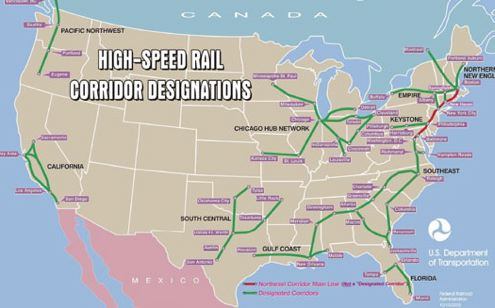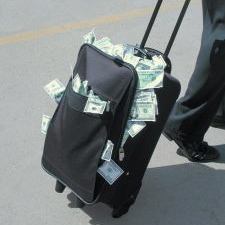Travel Tips
The Future of Travel: Solutions for America’s Transportation Problems
 Though flight delays may have improved in the short term, they will only get worse as the economy recovers, according to a report released today by a public policy organization.
Though flight delays may have improved in the short term, they will only get worse as the economy recovers, according to a report released today by a public policy organization.
The non-partisan Brookings Institution analyzed commercial air patterns over the last 20 years and found that delays decreased in the past year only because the recession caused carriers to cut back on the number of flights offered.
So what does this think-tank recommend to make travel better? And can any of their ideas actually be implemented?
Meanwhile, the report suggests that as the economy improves and the number of travelers and flights rebounds – particularly short-hop flights – delays will return. They attribute this mainly to the country’s inefficient air traffic control system.
 Researchers found that delays grew in number and duration over the past two decades, with one in 10 flights now arriving at least two hours late. The average delay in 2009 is almost an hour, compared to just 41 minutes in 1990.
Researchers found that delays grew in number and duration over the past two decades, with one in 10 flights now arriving at least two hours late. The average delay in 2009 is almost an hour, compared to just 41 minutes in 1990.
The Brookings Institution blames the hub-and-spoke network for these delays. Data shows that the vast majority of air traffic – and delays – are concentrated in just 26 metropolitan hubs, the six worst being New York, Chicago, Philadelphia, Miami, Atlanta, and San Francisco.
Even though these 26 metro hubs get the majority of traffic, they only received one-fifth of last year’s funding to improve airports. Meanwhile, the government continues to fund 2,834 airports nationwide which offer no scheduled passenger flights.
Avoid airport congestion with America’s Best Alternate Airports.
In that same 20-year span, short trips between city pairs like New York – Boston and Los Angeles – San Francisco have grown to make up half of all flights. The authors of the report suggested that high-speed rail lines in corridors like these would go a long way toward easing airport congestion.
 While high-speed rail isn’t a feasible option for every region, reports have shown that there are a number of potential corridors that would see high demand from riders and alleviate both air and road traffic in nearby cities.
While high-speed rail isn’t a feasible option for every region, reports have shown that there are a number of potential corridors that would see high demand from riders and alleviate both air and road traffic in nearby cities.
Environmentalists point out that cutting down on the number of short flights will also reduce harmful carbon emissions. The takeoff and landing stages are reportedly the least fuel-efficient, and these stages make up a greater percentage of flying time on these short trips.
Learn more: Will High Speed Rail Corridors Report Mean More Trains In Your City? And find out what the stimulus could mean for rail with an Update on President Obama’s Efforts to Improve America’s Trains.
The report did offer a number of other solutions to help cut down on delays. In addition to high-speed rail, the authors recommended modernizing the air traffic control system. To do this, they suggested incorporating technology that would allow planes to fly closer together.
 They also suggested privatizing airports and allowing them to charge airlines extra for takeoff and landing slots during peak hours.
They also suggested privatizing airports and allowing them to charge airlines extra for takeoff and landing slots during peak hours.
Several dozen airports around the world are now privately managed with mixed success. Branson Airport in Branson, Missouri is currently the only privately managed airport with commercial service in the U.S., although New Orleans is looking to privatize Louis Armstrong International airport.
With the number of delays expected to increase, passengers should make sure to budget their time accordingly and choose connecting flights that depart an hour or more after their first flight is scheduled to land.
Of the 26 busiest airports, Salt Lake City, Honolulu and San Jose, California ranked highest in on-time flights.
By Dan Bence for PeterGreenberg.com.
Related Links: Brookings Institute Report, CNN, MSNBC
PeterGreenberg.com Links:
- Holiday Travel 2009 Forecast & How to Get the Best Travel Deals
- New Orleans Seeks to Privatize Its Louis Armstrong International Airport:
- Will High Speed Rail Corridors Report Mean More Trains In Your City?
- The Latest on a Passenger Bill of Rights on The Early Show:
- America’s Best Alternate Airports:
- Update on President Obama’s Efforts to Improve America’s Trains
- FAA Reauthorization Bill Includes Passenger Rights & Air Traffic Control Modernization
- Scott McCartney Interview: Auctioning Landing Slots at American Airports












